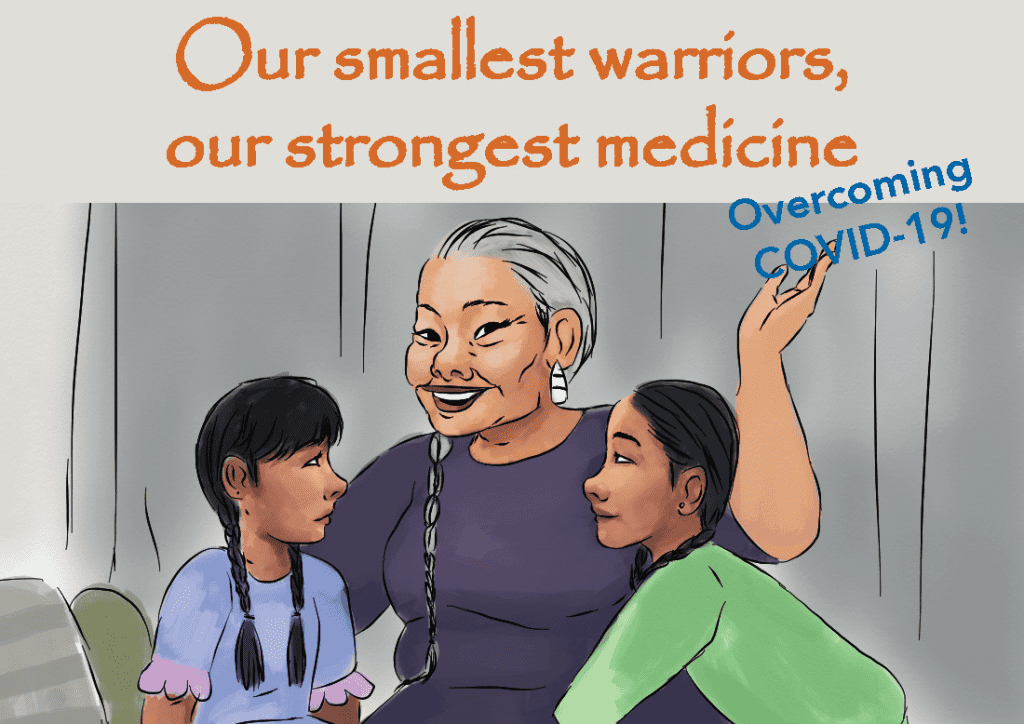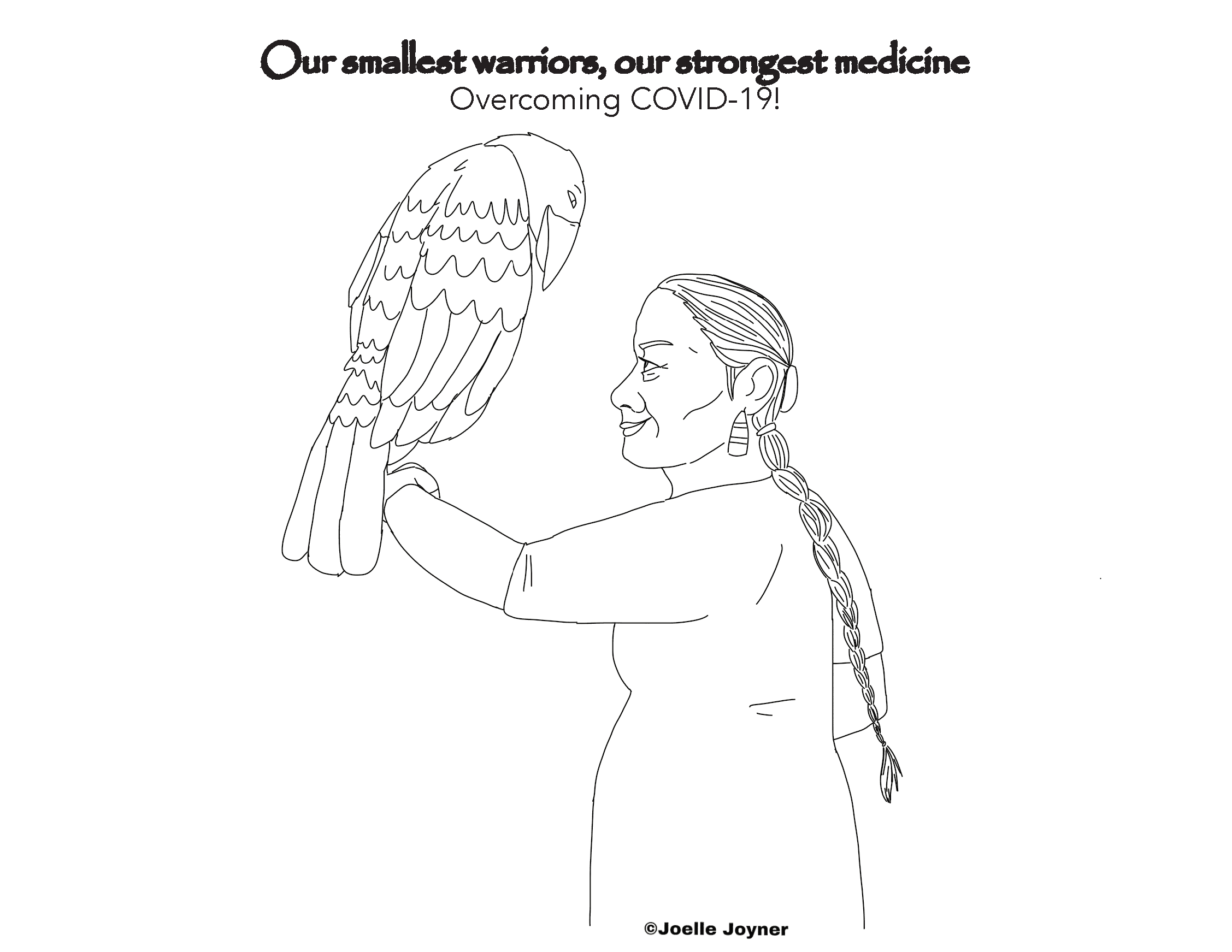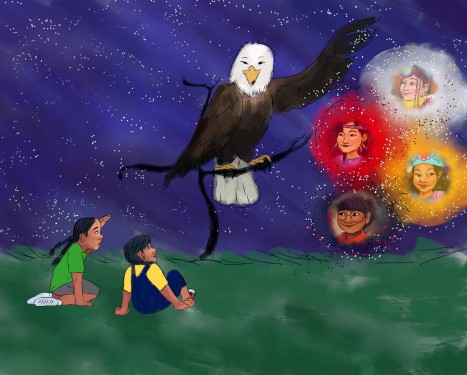About
Our Smallest Warriors, Our Strongest Medicine: Overcoming COVID-19
DOWNLOAD TO PRINT
 |
DOWNLOAD TO E-READ
 |
READ ALOUD VERSION
Did you know we have a sequel? Check out our newest storybook in the series, Our Smallest Warriors, Our Strongest Medicine: Honoring Our Teachings during COVID-19!
Please leave us a message with contact information and we’ll email you if additional copies of the book become available.

CHILDREN’S COLORING PAGES AND ACTIVITIES FROM OUR SMALLEST WARRIORS BOOK
 |
 |
 |
 |
 |
 |
Click the links below to access Indigenous language activity pages that go along with the coloring pages pictured above.
Grandma and Eagle Color and Word FunGrandma Hug Color and Word Fun
Grandpa Color and Word Fun
Jason and Dad Color and Word Fun
Powwow Color and Word Fun
Sophie and Mom Color and Word Fun
PARENT RESOURCES AND WORKSHEETS
Click on each image for a pdf.
 |
 |
 |
 |
 |
 |
 |
 |
 |
 |
Consider joining a virtual powwow. On Facebook, search “Social Distance Powwow” and find the public group.

This children’s storybook is a re-telling of My Hero is You, developed by the Inter-Agency Standing Committee Reference Group on Mental Health and Psychosocial Support in Emergency Settings (IASC MHPSS RG). An intertribal workgroup convened to re-write this story and create illustrations that represent Indigenous peoples, values, and communities. The adapted story seeks to reach Indigenous peoples across Turtle Island and portray a sense of communal efficacy, strength and hope in the face of the COVID-19 pandemic. Thank you to the Johns Hopkins University Alliance for a Healthier World, as well as the JHU Office of the President and Office of the Provost, for funding this project.
The people listed below contributed to the rewriting of the story. Some additional child-development, mental and health commmunication experts contributed to this book who are not listed below. They include citizens of the following tribal nations: Confederated Tribes of the Colville Rservation, Dine, Lone Pine Paiute-Shosone, Muscogee Creek Nation, and Ohkay Owingeh/Tewa.
Joshuaa Allison-Burbank, PhD, CCC-SLP, Diné and Acoma Pueblo, Johns Hopkins Center for American Indian Health, Johns Hopkins Bloomberg School of Public Health
Fiona Grubin, MSPH, Center for American Indian Health, Johns Hopkins Bloomberg School of Public Health
Emily E. Haroz, PhD, MA, MHS Center for American Indian Health, Johns Hopkins Bloomberg School of Public Health
Crystal Kee, BS, Diné Nation, Program Consultant, Center for American Indian Health, Johns Hopkins Bloomberg School of Public Health
Lisa Martin, MPH, Ojibwe, Inter-Tribal Council of Michigan
Kristin Masten, MPH, Center for American Indian Health, Johns Hopkins Bloomberg School of Public Health
Tara Maudrie, MSPH, Sault Ste. Marie Ojibwe, Center for American Indian Health, Johns Hopkins Bloomberg School of Public Health
Victoria M. O’Keefe, PhD, Cherokee/Seminole Nations of Oklahoma, Center for American Indian Health, Johns Hopkins Bloomberg School of Public Health
This book is illustrated by Joelle Joyner (Meherrin). She is an undergraduate student at Wayne State University, free-lance artist, illustrator, and Jingle Dress dancer from Detroit, Michigan. Notably, her art has been featured in the Kresge Foundation headquarters and in the National Museum of the American Indian magazine.

